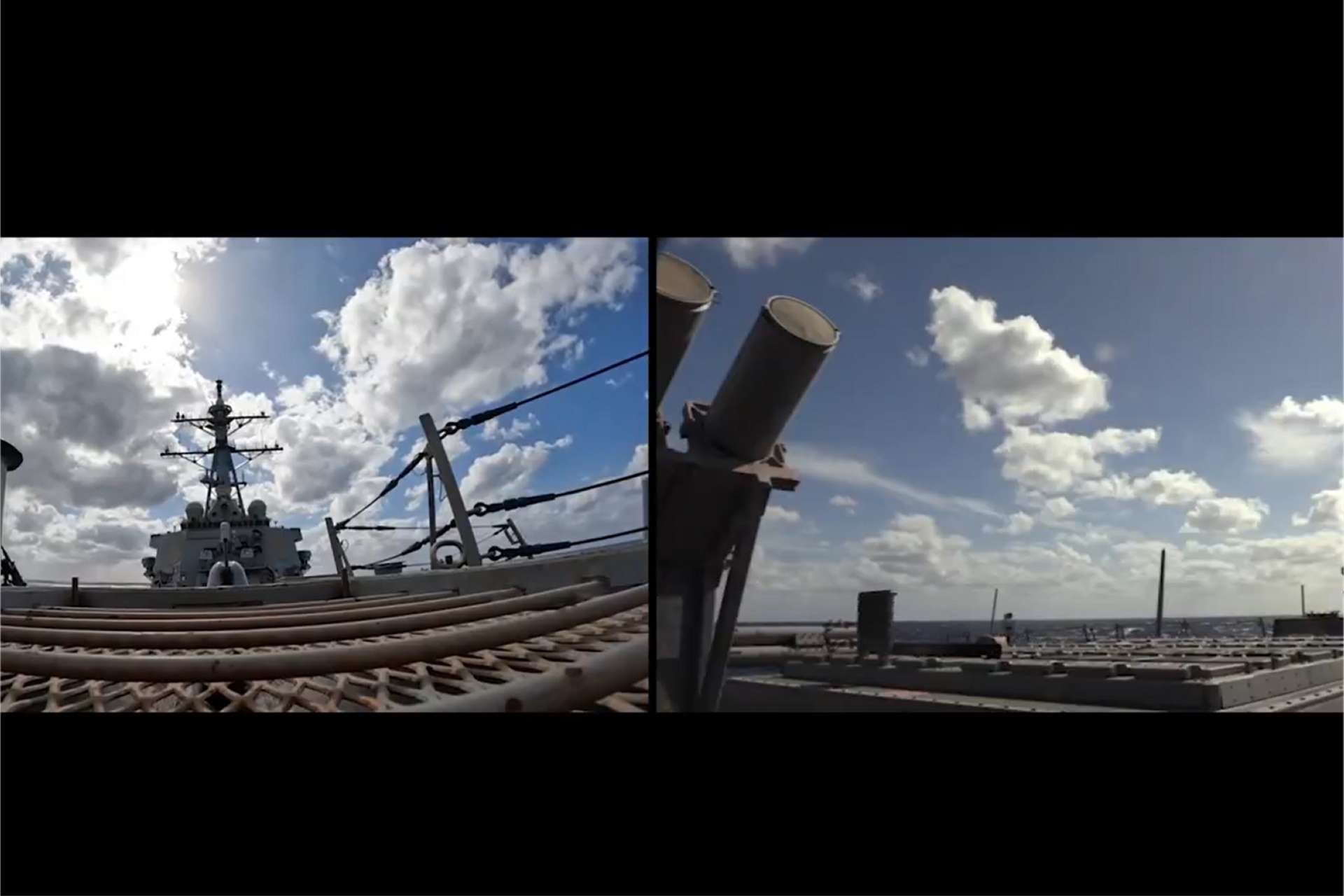Breaking News
Yemen Conflict: US Navy Dismantles Houthi Weapon Sites With Tomahawk Missiles.
According to information published by the US DoD on January 3, 2025, U.S. Navy guided-missile destroyers from the Harry S. Truman Carrier Strike Group, operating in the Red Sea, launched a series of Tomahawk Land Attack Missiles (TLAMs) against key Houthi infrastructure in Yemen. The strikes targeted command and control centers, weapon production facilities, and storage sites linked to the Iranian-backed Houthi movement.
Follow Army Recognition on Google News at this link

U.S. Navy guided-missile destroyers from the Harry S. Truman Carrier Strike Group launch precision Tomahawk Land Attack Missiles targeting Iranian-backed Houthi facilities in Yemen. (Picture source: US DoD)
The TLAM (Tomahawk Land Attack Missile) is a cornerstone of U.S. naval power, known for its long range, precision, and versatility. With a range exceeding 1,000 miles, these subsonic cruise missiles can strike deep into hostile territory while maintaining the safety of their launch platforms. The Tomahawk's navigation systems, which integrate GPS, inertial navigation, and terrain contour matching technologies, enable exceptional accuracy. This capability is critical for engaging high-value, fixed targets like fortified command centers and weapons depots, ensuring effective neutralization of threats with minimal collateral damage.
The destroyers used in this operation are part of the Arleigh Burke-class, which are equipped with the Aegis Combat System and vertical launch systems (VLS). These destroyers offer a robust combination of firepower, situational awareness, and survivability. The use of VLS allowed for rapid and simultaneous missile launches, enabling a coordinated strike on multiple targets. Operating from the Red Sea, the destroyers exploited the long range of the TLAMs to engage targets in Yemen while remaining outside the immediate reach of hostile forces.
The targeted Houthi facilities played a key role in the group’s military capabilities. Striking command centers disrupted their ability to coordinate operations, while destroying weapon production sites and storage depots reduced their capacity to manufacture and deploy advanced weapons. Many of these facilities were likely tied to Iranian support, as evidenced by the Houthis’ use of sophisticated drones and missiles in previous attacks. By targeting these assets, the operation aimed to degrade Houthi operational effectiveness and mitigate threats to regional stability.
The choice of TLAMs reflects their strategic advantages in modern warfare. These missiles provide a combination of precision, range, and scalability, allowing commanders to engage multiple, dispersed targets simultaneously. Their ability to receive in-flight retargeting data further enhances flexibility, enabling adjustments based on real-time intelligence. While their cost is significant, estimated at $1.5 million per missile, their effectiveness in neutralizing critical infrastructure justifies their use against high-value targets.
Conducting such an operation in the Red Sea presents its own challenges, given the area’s strategic importance as a major maritime route and its proximity to potential adversaries. The Houthis, supported by Iran, have previously targeted commercial shipping and military assets in the region using drones, mines, and anti-ship missiles.


























